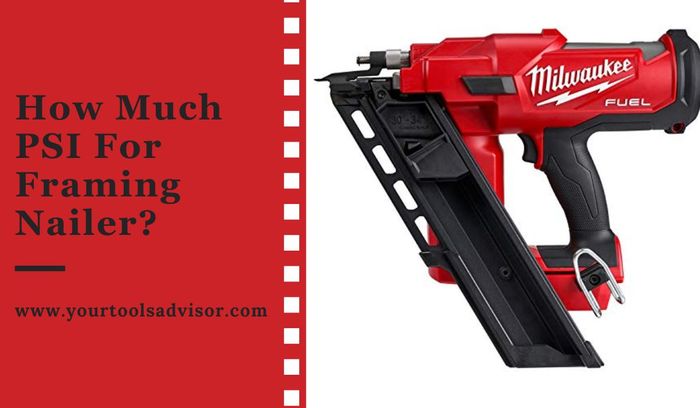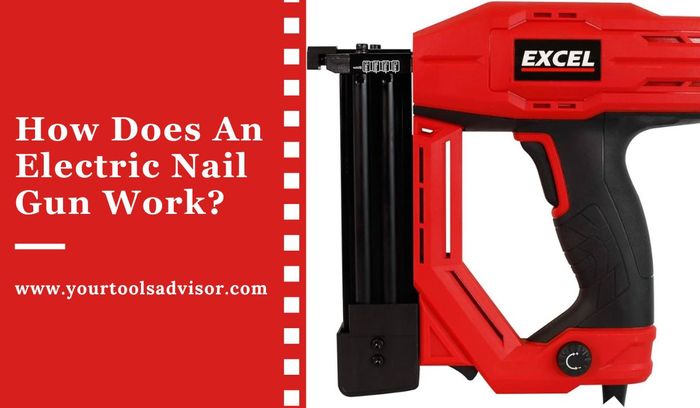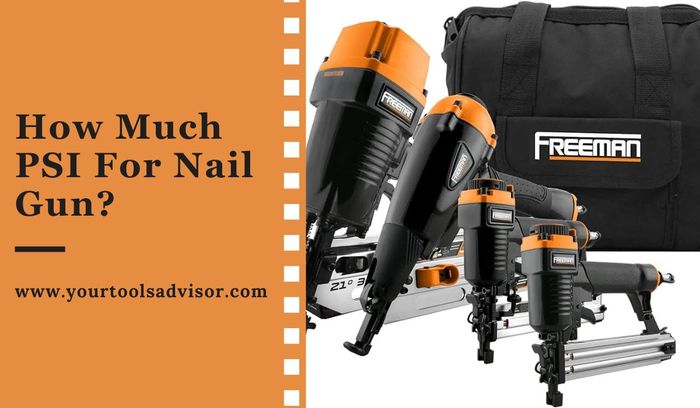In the realm of carpentry and construction, the efficiency and precision of your tools can make all the difference.
When it comes to framing nailers, one often overlooked but critical factor in achieving optimal performance is the pounds per square inch (PSI) setting. The right PSI not only ensures the safety of your equipment but also plays a pivotal role in the quality and durability of your finished projects.
A framing nailer typically requires between 70 and 120 PSI for optimal performance. When selecting the appropriate PSI for a framing nailer, it is important to consider the manufacturer’s recommendations and the specific requirements of the project at hand.
The PSI, or pounds per square inch, refers to the pressure at which the air is delivered from the air compressor to the nailer. It determines the power and force with which the nails are driven into the material. Using the correct PSI ensures that the nails are securely fastened and prevents jamming or other issues.
In our latest blog post, we delve into the world of framing nailers, exploring the significance of PSI and how it can impact your woodworking endeavors.
Whether you’re a seasoned professional or a DIY enthusiast, understanding the nuances of PSI settings for your framing nailer is key to unlocking the full potential of your tool and achieving flawless results.
Join us on this journey as we demystify the ideal PSI range for framing nailers and empower you to elevate your carpentry game.
Importance Of PSI In Framing Nailers
PSI, or pounds per square inch, is a crucial factor to consider when using a framing nailer. The right psi ensures optimal nail penetration and overall performance. It directly affects how effectively the nails are driven into the materials.
With the correct PSI setting, the nails will penetrate smoothly without causing damage or leaving gaps. Too low PSI may result in incomplete penetration and loose nails, while too high PSI can cause over penetration or even split the material.
Therefore, it is essential to understand the recommended PSI range for your specific framing nailer and adjust it accordingly for each project.
By doing so, you can ensure precise and efficient performance, saving both time and effort on your framing tasks.
How Much PSI For Framing Nailer?
The appropriate PSI (pounds per square inch) for a framing nailer typically ranges between 70 and 120 PSI. This range ensures optimal performance and helps prevent issues such as jamming or incomplete drives.
It’s crucial to consult the manufacturer’s guidelines for your specific framing nailer model, as the recommended PSI can vary. Running the nailer at the correct pressure not only enhances efficiency but also contributes to the longevity of the tool.
Adjusting the PSI based on the type of wood and the nail size being used is also advisable, as thicker materials may require higher pressure for proper penetration.
Using the right PSI for your framing nailer is essential for achieving precise and secure connections in framing applications. Deviating too far from the recommended pressure can result in inconsistent nail depth or, in extreme cases, damage to the material.
Regularly checking and adjusting the air pressure on your framing nailer according to the project’s requirements ensures a smooth and efficient operation, ultimately leading to a more successful and durable framing job.
Factors To Consider When Determining The Right PSI For Framing Nailers
Determining the appropriate PSI for a framing nailer involves considering several factors.
Firstly, the nail size and type play a crucial role in determining the necessary pressure. Additionally, the density and thickness of the wood being nailed should be taken into account.
The ambient temperature and humidity levels can also affect the overall performance of the framing nailer.
Finally, it is important to prioritize safety considerations when determining the PSI, ensuring that the operator and those around are protected. Taking all these factors into consideration will help determine the right pressure setting for your framing nailer.
Recommended PSI Range For Different Framing Nailer Applications
The recommended PSI range for different applications of a framing nailer may vary. For general framing, sheathing, and truss building, a PSI range of 70-120 is typically sufficient. When it comes to finish applications, such as installing baseboard and casing, a lower PSI range of 70-90 is recommended to avoid damaging the material.
Hanging drywall requires a PSI range of 60-80, as excessive force can break the drywall. For other applications like roofing and flooring, a PSI range of 70-120 is preferred, depending on the specific materials used.
It’s important to note that different nailers may have specific requirements, so always refer to the manufacturer’s recommendations for optimal performance.
Optimal PSI In Framing Nailers
The optimal PSI for a framing nailer depends on the specific model and nail size being used. If the PSI is too high, there is a risk of damaging the material, while if it is too low, the nails may not penetrate properly.
It is important to match the PSI setting with the recommended range provided by the nailer manufacturer.
I must let you know that different nail sizes require different psi settings for optimal performance. It is not recommended to use the same psi setting for different nail sizes.
When adjusting the PSI, it is crucial to follow safety precautions such as wearing protective gear and ensuring the nailer is disconnected from its power source.
Always refer to the manufacturer’s guidelines and consult a professional if needed to ensure safe and efficient use of a framing nailer.
Adjusting The PSI On A Framing Nailer
Adjusting the PSI on a framing nailer is a crucial task for achieving precise and efficient results. With a clear understanding of the adjustments on a framing nailer, you can easily increase or decrease the PSI setting to match your specific needs.
By fine-tuning the PSI, you can ensure optimal performance of the nailer, enabling it to drive nails smoothly and securely into the desired material.
Whether you’re working on a framing project or any other task that requires a nailer, taking the time to adjust the PSI correctly will greatly impact the outcome of your work.
So, don’t overlook this essential step and master the art of PSI adjustments to enhance the precision and effectiveness of your framing nailer.
Common Mistakes To Avoid When Setting The PSI On A Framing Nailer
Setting the correct PSI on a framing nailer is crucial to ensure efficient and safe operation. However, many people make common mistakes that can lead to performance issues and potential risks.
One mistake to avoid is using excessive PSI, which can cause damage to the wood and weaken the overall structure. On the other hand, using insufficient PSI may result in nails not properly penetrating the material or even getting stuck.
Another common error is failing to adjust the psi for different applications. Different materials and sizes of nails require different pressure levels.
Lastly, it is important not to ignore safety guidelines when adjusting the PSI. Always wear appropriate protective gear and make sure to follow manufacturer recommendations.
By avoiding these mistakes, you can optimize the performance of your framing nailer and ensure the quality of your work.
FAQs About How Much PSI For Framing Nailer
How much PSI do you need for a framing gun?
Typically, a framing gun requires an air pressure of 70 to 120 pounds per square inch (PSI) for optimal performance. It’s essential to consult the manufacturer’s specifications for your specific framing nailer to ensure proper usage.
Will A 150 PSI Air Compressor Run A Framing Nailer?
Yes, a 150 PSI air compressor is sufficient to run a framing nailer. A framing nailer typically requires a minimum operating pressure of 70-120 PSI, and a 150 PSI air compressor meets this requirement. With its high-pressure capacity, it provides enough power to drive nails into framing materials like wood or metal with ease.
The 150 PSI rating ensures consistent and reliable performance, making it suitable for framing projects of various sizes and complexities. It is important to note that the proper setup and maintenance of the air compressor, including regular inspection of components and using compatible nails, are essential for optimal performance.
By using a 150 PSI air compressor, you can confidently operate a framing nailer and complete your construction or woodworking tasks effectively.
What size air compressor do you need to run a framing nail gun?
You typically need an air compressor with a minimum capacity of 2 to 3 gallons and a pressure rating of 70-120 PSI to effectively run a framing nail gun.
You must check the tool’s specifications in order to have a precise idea about specific requirements.
What Size Air Compressor Do I Need To Run A Framing Nail Gun?
To efficiently run a framing nail gun, you’ll need an air compressor that can generate at least 2.5 to 3.5 cubic feet per minute (cfm) at 90 pounds per square inch (PSI). This is the minimum requirement to ensure consistent and smooth operation.
Keep in mind that some nail guns may have specific CFM and PSI requirements, so it’s essential to check the manufacturer’s recommendations. Investing in a compressor with a larger tank capacity will also provide greater convenience, as it won’t need to cycle as frequently to refill.
Remember to consider the power source you have available (electric or gas) and the portability of the air compressor if you’ll be using it in various locations.
How much PSI is needed for a roofing nailer?
A typical roofing nailer requires an operating pressure of around 70 to 120 pounds per square inch (PSI) for optimal performance. However, it’s crucial to consult the manufacturer’s guidelines for the specific model you’re using to ensure proper functionality.
How much PSI for brad nailer?
The recommended PSI (pounds per square inch) for a brad nailer typically ranges between 70 and 120 PSI. It’s essential to consult the manufacturer’s guidelines for your specific brad nailer model to ensure optimal performance and safety.
Adjusting the air pressure within this range will help you achieve accurate and efficient results while using the tool.
How much PSI for finish nailer?
The recommended PSI (pounds per square inch) for a finish nailer typically ranges from 60 to 100 PSI. It’s essential to consult the manufacturer’s guidelines for your specific finish nailer model, as PSI requirements can vary.
Adjust the pressure based on the type and thickness of the material you’re working with to ensure optimal performance and avoid any potential damage.
What pressure do most nailers operate at?
Most nailers operate at a pressure range of 70 to 120 pounds per square inch (PSI). This standard pressure allows for effective and precise driving of nails into various materials without causing damage.
It is essential to adhere to the recommended pressure settings specified by the manufacturer for optimal performance and safety.
Conclusion
After considering all the factors, it is clear that determining the right PSI for a framing nailer is crucial for achieving efficient and accurate results. The PSI setting should be based on the type and thickness of the material being framed, as well as the manufacturer’s recommendations.
While a higher PSI may seem appealing for increased power, it can lead to overdriven nails and damage to the materials. On the other hand, using a lower psi may result in underdriven nails and weaker joints.
It is to be noted that finding the right balance is essential to ensure the longevity and structural integrity of the project.
Remember to consider the type of framing nailer being used, as different models may have varying PSI requirements.
By understanding and adjusting the PSI settings accordingly, you can confidently tackle any framing project with precision and efficiency.
So, this is all I wanted to share with you this time.
See You Soon!





Leave a Reply